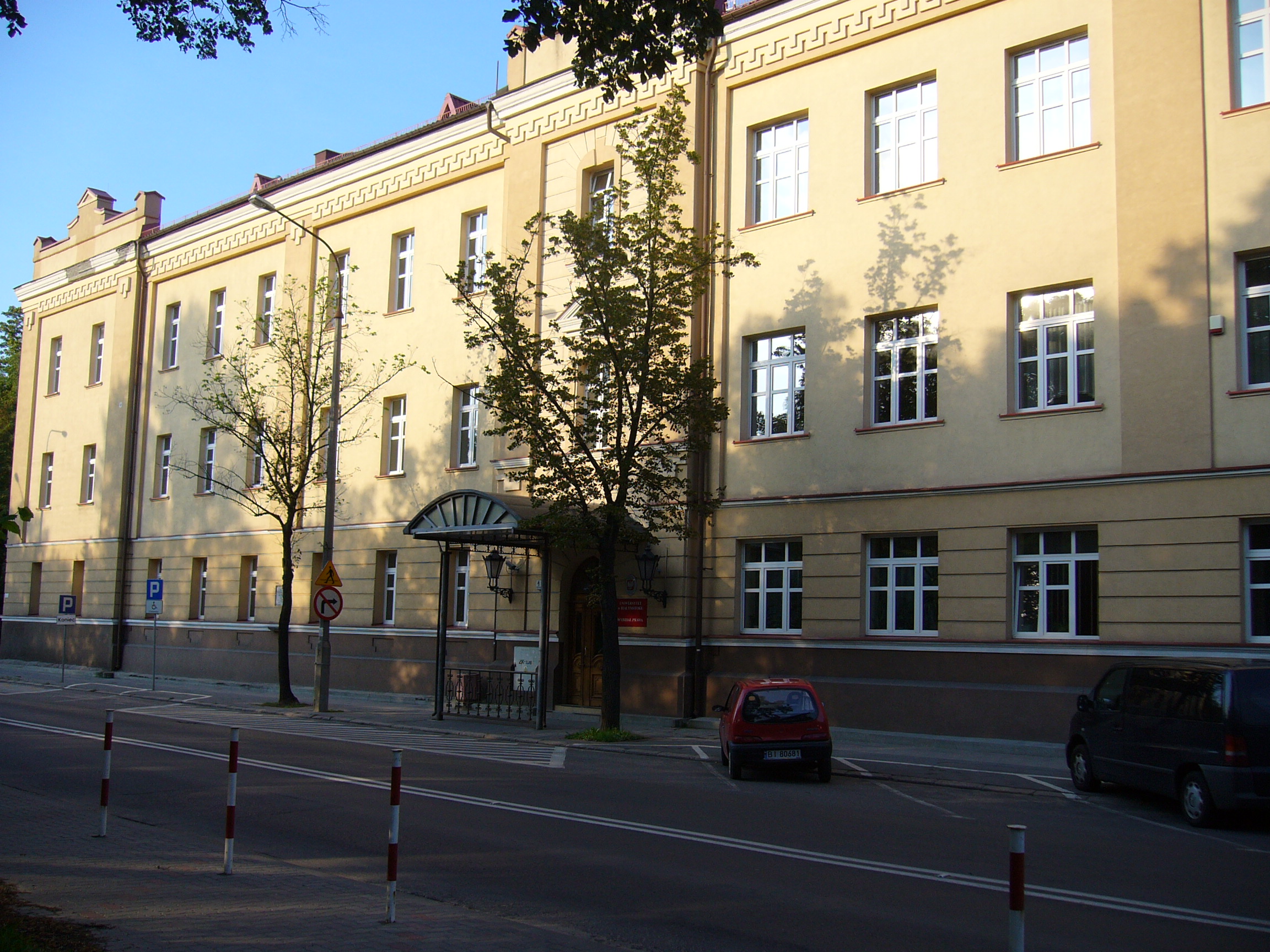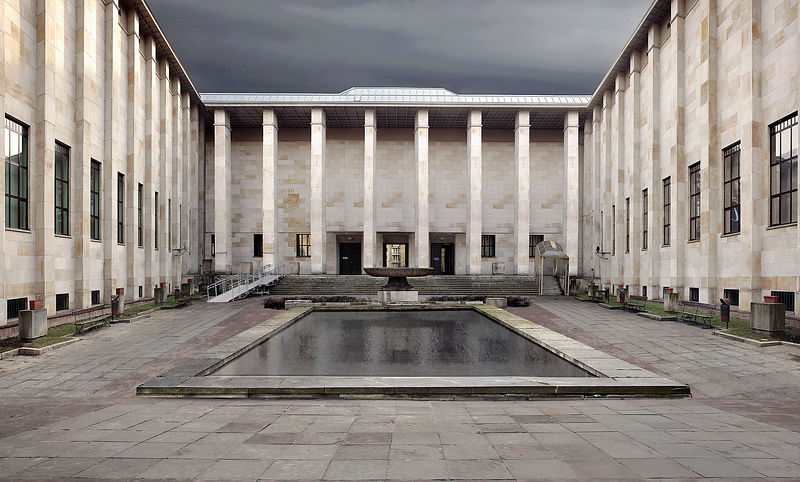|
The Ludwik Zamenhof Centre
The Ludwik Zamenhof Centre is a cultural institution located in Białystok, Poland, at ''ulica Warszawska 19'' (!9 Warsaw Street). It was founded at the initiative of the city's president (mayor) in celebration of the 94th World Congress of Esperanto that was held in Białystok from 25 July to 1 August 2009. The Centre was opened to visitors on 21 July 2009. Initially it was a branch of the Białystok Cultural Centre but since January 2011 has been an autonomous cultural institution. The Zamenhof Centre hosts a permanent exhibition – "The Bialystok of Young Zamenhof" – and temporary exhibits, concerts, film showings, and theatre performances. The Centre also regularly holds panel discussions, lectures, and literary events. Additionally the Zamenhof Centre organizes educational workshops for children and teenagers as well as social and educational programs such as the Living Library and "Discover Bialystok", an outdoor activity conducted in the city. Description The buildi ... [...More Info...] [...Related Items...] OR: [Wikipedia] [Google] [Baidu] |
Białystok
Białystok is the largest city in northeastern Poland and the capital of the Podlaskie Voivodeship. It is the tenth-largest city in Poland, second in terms of population density, and thirteenth in area. Białystok is located in the Białystok Uplands of the Podlachian Plain on the banks of the Biała River, by road northeast of Warsaw. It has historically attracted migrants from elsewhere in Poland and beyond, particularly from Central and Eastern Europe. This is facilitated by the nearby border with Belarus also being the eastern border of the European Union, as well as the Schengen Area. The city and its adjacent municipalities constitute Metropolitan Białystok. The city has a warm summer continental climate, characterized by warm summers and long frosty winters. Forests are an important part of Białystok's character and occupy around (18% of the administrative area of the city) which places it as the fifth-most forested city in Poland. The first settlers arrived in t ... [...More Info...] [...Related Items...] OR: [Wikipedia] [Google] [Baidu] |
World Congress Of Esperanto
The World Esperanto Congress ( eo, Universala Kongreso de Esperanto, UK) is an annual Esperanto convention. It has the longest tradition among international Esperanto conventions, with an almost unbroken run for 113 years. The congresses have been held since 1905 every year, except during World War I, World War II, and the COVID-19 pandemic. Since the 1920s, the Universal Esperanto Association has been organizing these congresses. These congresses take place every year and, over the 30 years from 1985 through 2014, have gathered an average of about 2,000 participants (since World War II World War II or the Second World War, often abbreviated as WWII or WW2, was a world war that lasted from 1939 to 1945. It involved the World War II by country, vast majority of the world's countries—including all of the great power ... it has varied from 800 to 6,000, depending on the venue). The average number of countries represented is about 60. Some specialized organizations ... [...More Info...] [...Related Items...] OR: [Wikipedia] [Google] [Baidu] |
University Of Białystok
The University of Bialystok is the largest university in the north-eastern region of Poland, educating in various fields of study, including humanities, social and natural sciences and mathematics. It has nine faculties, including a foreign one in Vilnius. Four faculties have been awarded the highest scientific category “A”. The University of Bialystok has the right to confer doctoral degrees in ten fields, as well as postdoctoral degrees in law, economics, chemistry, biology, history and physics. Over 13,000 students are being educated in 31 fields of study, including doctoral studies and postgraduate studies. The university employs nearly 800 academics, almost 200 professors among them. Every year the university carries out approximately 60 research projects, financed from domestic and foreign funds; it also benefits from the structural funds. Among the university's many accomplishments are its participation in 6th and 7th Framework Programme for Research, Technological De ... [...More Info...] [...Related Items...] OR: [Wikipedia] [Google] [Baidu] |
The University Of Bialystok Foundation
''The'' () is a grammatical article in English, denoting persons or things that are already or about to be mentioned, under discussion, implied or otherwise presumed familiar to listeners, readers, or speakers. It is the definite article in English. ''The'' is the most frequently used word in the English language; studies and analyses of texts have found it to account for seven percent of all printed English-language words. It is derived from gendered articles in Old English which combined in Middle English and now has a single form used with nouns of any gender. The word can be used with both singular and plural nouns, and with a noun that starts with any letter. This is different from many other languages, which have different forms of the definite article for different genders or numbers. Pronunciation In most dialects, "the" is pronounced as (with the voiced dental fricative followed by a schwa) when followed by a consonant sound, and as (homophone of the archaic pron ... [...More Info...] [...Related Items...] OR: [Wikipedia] [Google] [Baidu] |
Esperanto
Esperanto ( or ) is the world's most widely spoken constructed international auxiliary language. Created by the Warsaw-based ophthalmologist L. L. Zamenhof in 1887, it was intended to be a universal second language for international communication, or "the international language" (). Zamenhof first described the language in '' Dr. Esperanto's International Language'' (), which he published under the pseudonym . Early adopters of the language liked the name ''Esperanto'' and soon used it to describe his language. The word translates into English as "one who hopes". Within the range of constructed languages, Esperanto occupies a middle ground between "naturalistic" (imitating existing natural languages) and ''a'priori'' (where features are not based on existing languages). Esperanto's vocabulary, syntax and semantics derive predominantly from languages of the Indo-European group. The vocabulary derives primarily from Romance languages, with substantial contributions from Ge ... [...More Info...] [...Related Items...] OR: [Wikipedia] [Google] [Baidu] |
Buildings And Structures In Białystok
A building, or edifice, is an enclosed structure with a roof and walls standing more or less permanently in one place, such as a house or factory (although there's also portable buildings). Buildings come in a variety of sizes, shapes, and functions, and have been adapted throughout history for a wide number of factors, from building materials available, to weather conditions, land prices, ground conditions, specific uses, prestige, and aesthetic reasons. To better understand the term ''building'' compare the list of nonbuilding structures. Buildings serve several societal needs – primarily as shelter from weather, security, living space, privacy, to store belongings, and to comfortably live and work. A building as a shelter represents a physical division of the human habitat (a place of comfort and safety) and the ''outside'' (a place that at times may be harsh and harmful). Ever since the first cave paintings, buildings have also become objects or canvasses of much artistic ... [...More Info...] [...Related Items...] OR: [Wikipedia] [Google] [Baidu] |
Esperanto Culture
Esperanto culture refers to the shared cultural experience of the Esperantujo, or Esperanto-speaking community. Despite being a constructed language, Esperanto has a history dating back to the late 19th century, and shared socio-cultural norms have developed among its speakers. Some of these can be traced back to the initial ideas of the language's creator, L. L. Zamenhof, Ludwig Zamenhof, including the theory that a global second language would foster international communication. Others have developed over time, as the language has allowed different national and linguistic cultures to blend together. Some Esperanto speakers have also researched the language's ideologies. Esperanto culture also includes art, literature, and music, as well as international celebrations and cultural exchanges such as the Pasporta Servo. Native speakers Native Esperanto speakers are people who have acquired Esperanto as one of their native languages. As of 1996, there were 350 or so attested cases ... [...More Info...] [...Related Items...] OR: [Wikipedia] [Google] [Baidu] |
Museums In Poland
The Minister of Culture and National Heritage of Poland may inscribe a Polish museum into the National Register of Museums ( pl, Państwowy Rejestr Muzeów) in order to confirm the high level of its cultural activity and the importance of its collection. Only those museums that meet the required criteria – including importance of the museum's collection, a team of well qualified employees, an adequate building, and a permanent source of financing – may be entered into the register. Such museums are known as registered museums (). A registered museum that no longer meets the criteria may be removed from the register. Registered museums enjoy certain privileges that other museums in Poland do not. A registered museum has the right of pre-emption for artefacts offered for sale by antique traders and at auctions. Directors of registered museums elect triennially from among themselves eleven out of 21 members of the Museums Council (), which advises the Minister of Culture and Nat ... [...More Info...] [...Related Items...] OR: [Wikipedia] [Google] [Baidu] |
Organisations Based In Białystok
An organization or organisation (Commonwealth English; see spelling differences), is an entity—such as a company, an institution, or an association—comprising one or more people and having a particular purpose. The word is derived from the Greek word ''organon'', which means tool or instrument, musical instrument, and organ. Types There are a variety of legal types of organizations, including corporations, governments, non-governmental organizations, political organizations, international organizations, armed forces, charities, not-for-profit corporations, partnerships, cooperatives, and educational institutions, etc. A hybrid organization is a body that operates in both the public sector and the private sector simultaneously, fulfilling public duties and developing commercial market activities. A voluntary association is an organization consisting of volunteers. Such organizations may be able to operate without legal formalities, depending on jurisdiction, including ... [...More Info...] [...Related Items...] OR: [Wikipedia] [Google] [Baidu] |



.png)



